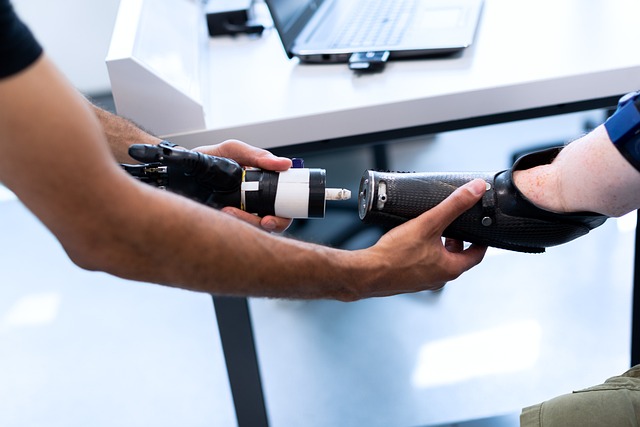For children who use prosthetics, every advancement brings new possibilities. The future of pediatric prosthetics is not just about replacing lost limbs—it’s about improving comfort, movement, and confidence. Technology is evolving rapidly, and in 2024, new innovations are making prosthetics more functional, lightweight, and even smarter.
This article explores the latest breakthroughs in pediatric prosthetics, from bionic limbs with advanced sensors to 3D-printed solutions that make prosthetics more affordable and accessible. Whether you’re a parent, a caregiver, or simply interested in the future of prosthetic technology, this guide will give you a clear look at how things are changing for the better.
Let’s dive into the latest innovations that are shaping the future of pediatric prosthetics.
1. Smart Bionic Prosthetics with AI and Sensors
In 2024, prosthetics are no longer just mechanical limbs. They are becoming smarter, thanks to artificial intelligence (AI) and advanced sensors. These new technologies help children control their prosthetics more easily and naturally.
Modern bionic limbs now use AI to learn a child’s movement patterns. By analyzing muscle signals, AI can predict what the child wants to do next and move accordingly. This means a child doesn’t have to think too much about using their prosthetic—it responds almost like a real limb. Sensors inside the prosthetic improve grip control, making it easier to hold objects without dropping them.
Another breakthrough is real-time feedback. Many advanced prosthetics now send signals back to the brain, mimicking the feeling of touch. This helps children know how hard they are gripping something, whether they are touching a rough or smooth surface, and even when they need to adjust their hold. These features make prosthetics feel more natural, improving confidence and usability.
Perhaps the most exciting development is the ability to customize movements. With AI-driven apps, children can now program their prosthetic to perform specific actions, such as playing a musical instrument or using a computer mouse. These features make prosthetics more personal and adaptable to each child’s lifestyle.
2. 3D Printing: Making Prosthetics More Affordable and Accessible
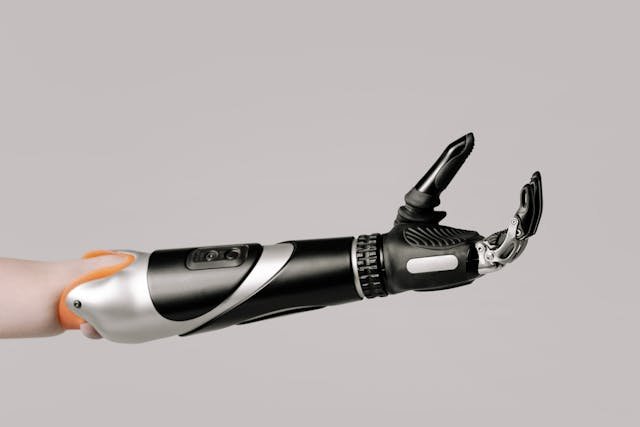
One of the biggest challenges in pediatric prosthetics has always been cost. Because children grow quickly, they often need multiple prosthetics throughout their lives. Traditional prosthetics can be expensive, making it difficult for families to afford frequent replacements. In 2024, 3D printing is solving this problem.
With 3D printing, prosthetic limbs can be made quickly and at a lower cost. Instead of waiting weeks or months for a prosthetic, children can now get a customized limb in just a few days. The material used in 3D-printed prosthetics is lightweight yet durable, making it perfect for growing kids. Plus, these prosthetics can be easily modified as the child grows, reducing the need for complete replacements.
Customization is another huge advantage. 3D printing allows children to choose different colors, patterns, and designs that reflect their personality. Some children prefer a realistic-looking prosthetic, while others love bright, superhero-inspired designs. This personalization helps kids feel more confident about using their prosthetic and reduces any stigma they might feel.
The technology is also helping children in remote areas. Many organizations now use mobile 3D-printing labs to bring prosthetic solutions to underserved communities. This means more children around the world can access high-quality prosthetics without the burden of high costs or long travel distances.
3. Myoelectric Prosthetics: Controlling Limbs with Muscle Signals
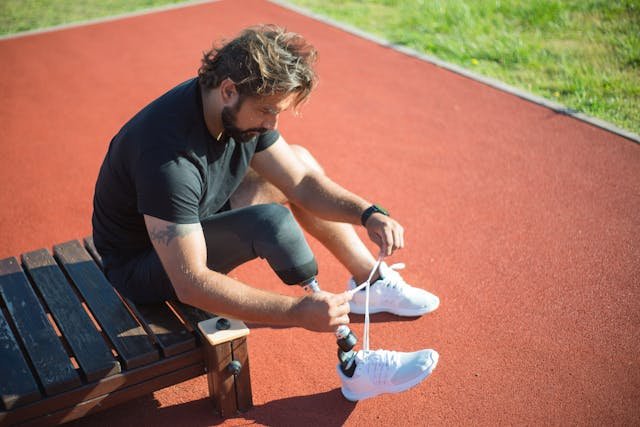
Myoelectric prosthetics have been around for a while, but in 2024, they have reached a whole new level. These prosthetics work by detecting electrical signals from the child’s muscles and converting them into movement. This allows for a more natural and intuitive way to control the prosthetic.
One of the biggest improvements in myoelectric prosthetics this year is the increased sensitivity of sensors. In the past, users needed strong muscle signals to operate their prosthetic. Now, new-generation sensors can pick up even the slightest muscle movements, making it easier for children to control their limb. This is especially helpful for young kids or those with weaker muscles.
Battery life has also improved. Earlier myoelectric prosthetics needed frequent charging, sometimes multiple times a day. In 2024, new energy-efficient designs have extended battery life significantly, allowing children to use their prosthetic for a full day without worrying about recharging.
Additionally, these prosthetics are becoming more adaptive. They can now adjust their grip strength based on the weight of the object being held. If a child picks up a fragile item like an egg, the prosthetic hand will automatically reduce its grip pressure to prevent breaking it. This makes everyday tasks much easier and helps children feel more in control.
4. Gamified Rehabilitation: Making Learning Fun
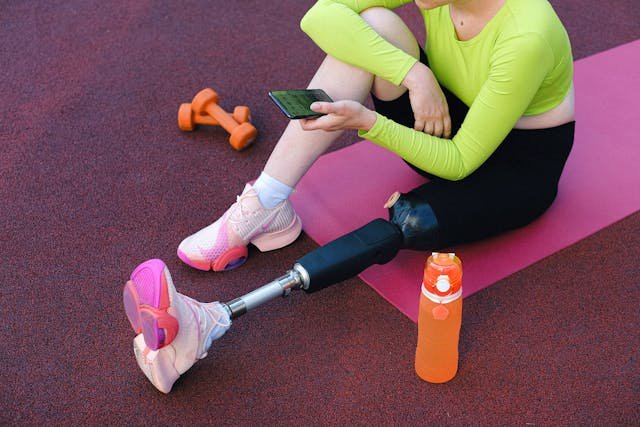
Adapting to a prosthetic limb takes time, especially for children. To make this process easier, 2024 has seen a rise in gamified rehabilitation—turning prosthetic training into a fun, interactive experience.
Traditional therapy can feel repetitive and boring for kids. Gamified rehabilitation changes this by using virtual reality (VR), mobile apps, and interactive games to help children learn how to use their prosthetic in a way that feels like play. For example, VR environments allow children to practice moving their prosthetic hand in a simulated world, helping them build confidence before using it in real life.
Some apps also offer challenges and rewards. If a child successfully grips an object or completes a certain movement, they earn points or unlock new levels. This encourages them to keep practicing and improving their control over their prosthetic. These games are designed to be engaging while still helping children develop the muscle coordination they need.
Another advantage of gamified rehabilitation is remote monitoring. Parents and therapists can track progress through an app and make necessary adjustments. This ensures that children get the right training without needing to visit a clinic frequently. By making therapy fun and interactive, gamified rehabilitation is helping children adapt to their prosthetics faster and with more confidence.
5. Lightweight Materials for Better Comfort and Mobility
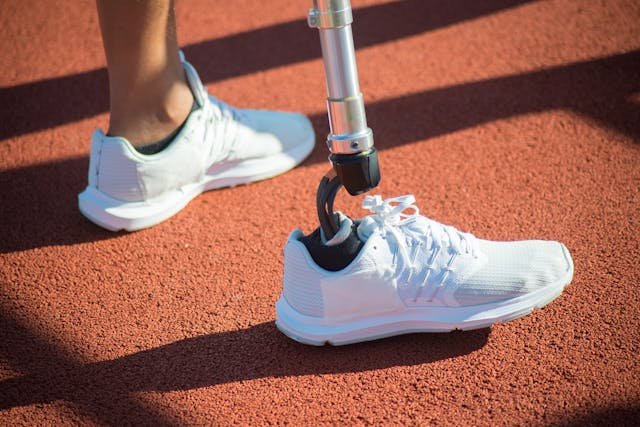
For years, one of the biggest complaints about prosthetics was their weight. Traditional prosthetics could feel heavy and uncomfortable, making it difficult for children to move freely. In 2024, new lightweight materials are changing that.
Modern prosthetics now use advanced carbon fiber and flexible polymers that are strong yet incredibly light. These materials reduce strain on a child’s body, making it easier for them to wear their prosthetic all day without discomfort. The lighter weight also helps improve balance and coordination, allowing kids to run, jump, and play without restrictions.
Another breakthrough is the use of temperature-regulating materials. In the past, prosthetic sockets could become hot and sweaty, causing irritation. Now, new breathable materials help maintain a comfortable temperature, reducing the risk of skin problems and improving overall comfort.
Additionally, flexible joints are becoming more common. These joints mimic natural limb movements, making walking and gripping objects feel more natural. The combination of lightweight materials and flexible movement is making prosthetics more comfortable than ever before.
6. Customizable Prosthetics: Personalization for Every Child
Every child is unique, and their prosthetic should reflect their personality and lifestyle. In 2024, prosthetic customization is reaching new heights, allowing children to choose designs, colors, and features that make their prosthetic feel like a natural part of them.
With 3D scanning and printing, prosthetics can now be designed to fit perfectly. In the past, prosthetics were often made using general sizes, leading to discomfort and poor function. Now, detailed scans of a child’s limb ensure a precise, comfortable fit. This means fewer adjustments and better mobility from the start.
Beyond fit, personalization is also about aesthetics. Children can choose from various colors, patterns, and even themed designs. Some kids prefer a prosthetic that looks like a natural limb, while others love bright, superhero-inspired designs. Customization helps children feel confident about wearing their prosthetic, reducing any feelings of self-consciousness.
Even the function of prosthetics is becoming customizable. Some children need prosthetics that focus on fine motor skills, while others require extra durability for sports and outdoor activities. With modular attachments, kids can switch between different prosthetic hands, feet, or grip styles depending on what they’re doing. This flexibility ensures that the prosthetic grows with the child’s interests and lifestyle.
7. Making Prosthetics More Accessible to All Children
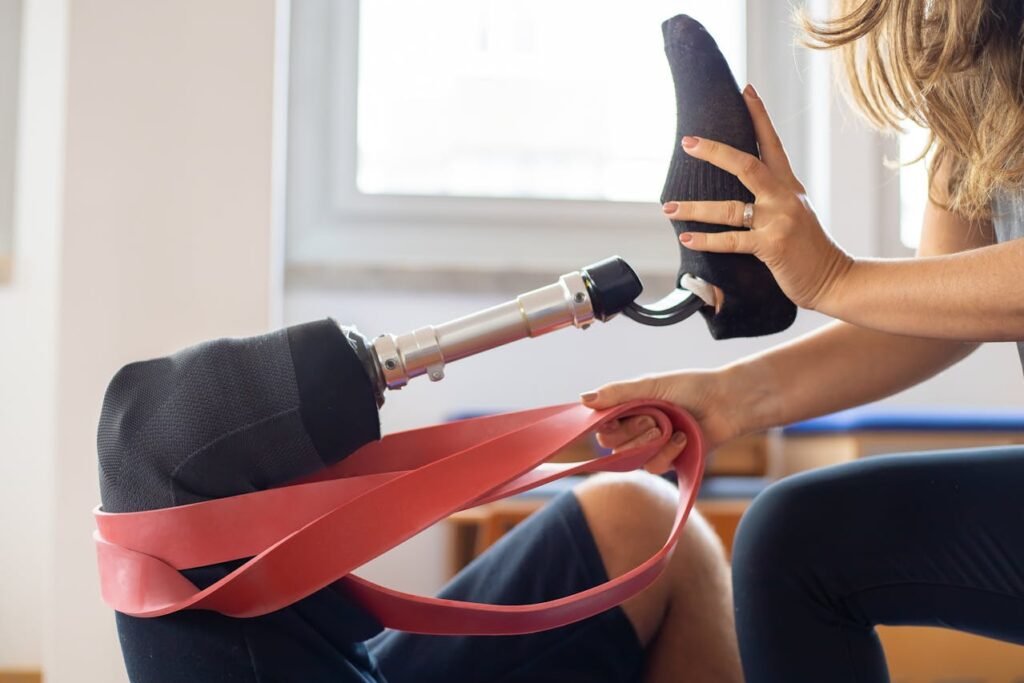
Despite all these advancements, access to high-quality prosthetics remains a challenge for many families, especially in developing countries. In 2024, new efforts are being made to make prosthetics more affordable and available to all children who need them.
One of the biggest changes is open-source prosthetic designs. Many organizations are now sharing prosthetic blueprints online, allowing local clinics and charities to 3D print limbs at a fraction of the traditional cost. This is especially important in rural areas, where families may not have access to expensive medical technology. By decentralizing production, more children can receive prosthetics without long waiting times or high costs.
Government and non-profit programs are also stepping up. Many countries are now introducing policies that help cover the cost of pediatric prosthetics, ensuring that families don’t have to bear the financial burden alone. In India, initiatives like Make in India are supporting local prosthetic manufacturers like Robobionics, ensuring that children have access to high-quality, homegrown solutions.
Another exciting innovation is the use of prosthetic recycling programs. Since children outgrow their prosthetics quickly, many organizations are now collecting used prosthetics, refurbishing them, and donating them to other children. This reduces waste while making prosthetics more widely available to those in need.
8. The Role of Robotics in Pediatric Prosthetics
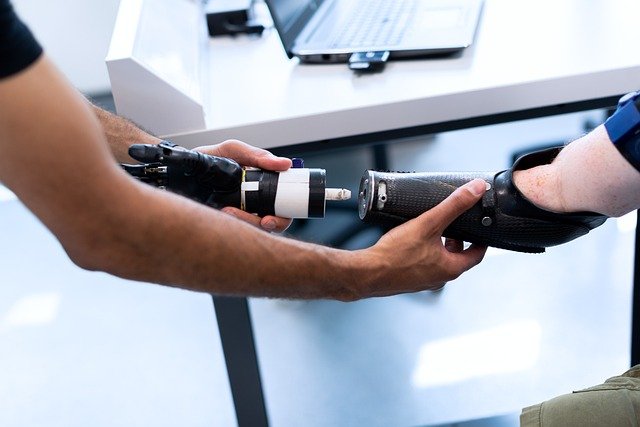
Prosthetics are becoming more advanced, and robotics is playing a huge role in this transformation. In 2024, robotic prosthetics are giving children greater control, precision, and even the ability to “feel” through their artificial limbs.
One of the most exciting developments is brain-controlled prosthetics. Researchers are working on technology that connects directly to a child’s nervous system, allowing them to control their prosthetic just by thinking about it. While this technology is still in its early stages, some children have already tested robotic hands that move in response to their brain signals, making the prosthetic feel like a real part of their body.
Another breakthrough is self-learning prosthetics. With built-in AI, robotic limbs can now “learn” from a child’s movements, adapting to their habits and improving over time. For example, if a child frequently uses their prosthetic hand to pick up a spoon, the AI will optimize its grip strength and movement for that specific task. This makes daily activities smoother and more natural.
Robotic prosthetics are also being designed with haptic feedback, meaning they can send signals back to the user. This allows children to “feel” textures, pressure, and even temperature through their prosthetic, making interactions with the world more intuitive. These advancements are bringing prosthetics closer than ever to the experience of a natural limb.
9. Emotional and Psychological Support for Children with Prosthetics
Technology is making prosthetics better, but emotional support is just as important. A prosthetic is more than just a tool—it’s a part of a child’s identity. In 2024, there is a stronger focus on helping children adapt emotionally to their prosthetic and feel confident in their daily lives.
One major improvement is the rise of peer support networks. Many organizations are connecting children with prosthetics so they can share experiences, challenges, and encouragement. When kids see others like them thriving with a prosthetic, it boosts their confidence and helps them feel less alone.
Counseling and therapy are also becoming more accessible. Many hospitals and clinics now offer specialized support for children adapting to a prosthetic limb. Therapists help kids navigate their emotions, build self-esteem, and develop a positive mindset. This is especially important for children who may struggle with body image or social interactions.
Families also play a huge role. In 2024, more resources are available to educate parents on how to support their child’s journey. From teaching kids how to explain their prosthetic to friends, to encouraging independence, families are receiving better guidance on how to help their child adjust with confidence.
10. The Future of Pediatric Prosthetics: What’s Next?
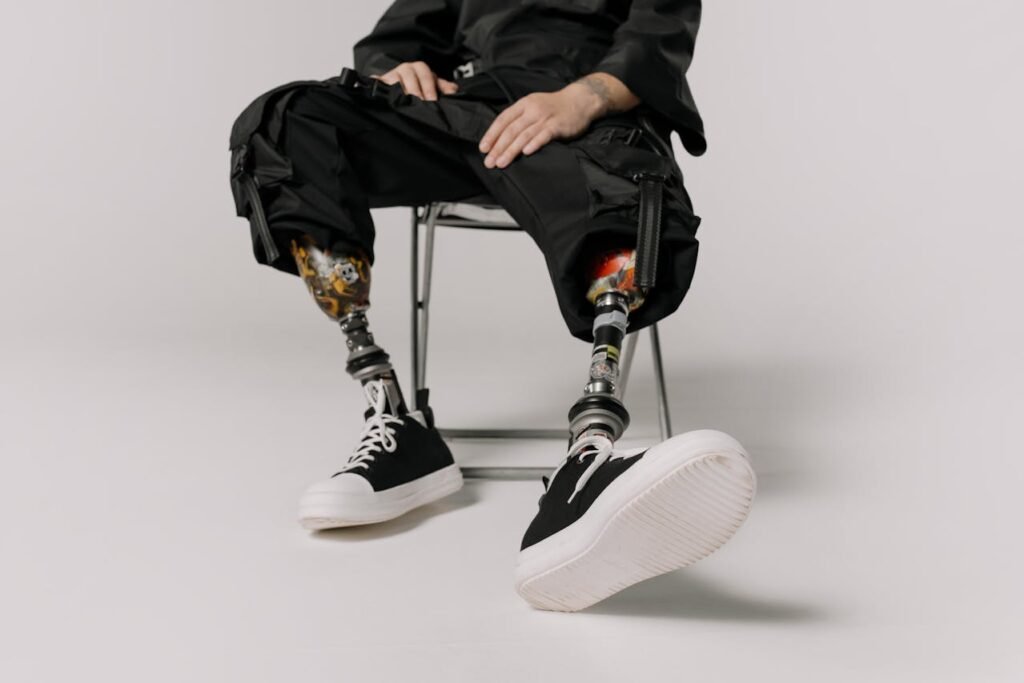
With so much progress in pediatric prosthetics, the future looks bright. But what’s next? Experts predict that the next big breakthroughs will focus on even smarter, more natural prosthetics that seamlessly integrate with a child’s body and brain.
One area of research is fully mind-controlled prosthetics. While current robotic limbs rely on muscle signals or partial brain connections, future designs may allow children to control their prosthetic entirely through thought, just like a natural limb. This would make movement completely effortless and intuitive.
Another exciting direction is biodegradable prosthetics. Scientists are exploring eco-friendly materials that could make prosthetics more sustainable. In the future, old prosthetic parts may be safely broken down and recycled, reducing environmental impact while keeping costs low.
We may also see more personalized and interactive prosthetics. Future prosthetics could include voice control, touchscreen interfaces, or even built-in smart assistants to help children with daily tasks. Imagine a prosthetic hand that reminds a child when it’s time to charge it or adjust its settings automatically based on activity levels.
As we move forward, the goal of pediatric prosthetics will remain the same: to give children the freedom to move, play, and live their lives with confidence. At Robobionics, we are committed to being at the forefront of these innovations, ensuring that every child has access to the best possible prosthetic solutions.
Final Thoughts: A Brighter Future for Pediatric Prosthetics
The future of pediatric prosthetics is more exciting than ever. With advancements in AI, 3D printing, myoelectric control, and lightweight materials, children now have access to prosthetics that are smarter, more comfortable, and easier to use. These innovations are not just about replacing lost limbs—they are about giving children the confidence and ability to live their lives to the fullest.
At Robobionics, we are committed to making these advanced solutions accessible to every child. Our mission is to provide high-quality, innovative prosthetics that empower children to move, play, and thrive.
If you’re looking for the right prosthetic for your child, book a free consultation today and explore how our cutting-edge technology can help your child live more confidently. The future of prosthetics is here—and we’re excited to be part of it.



